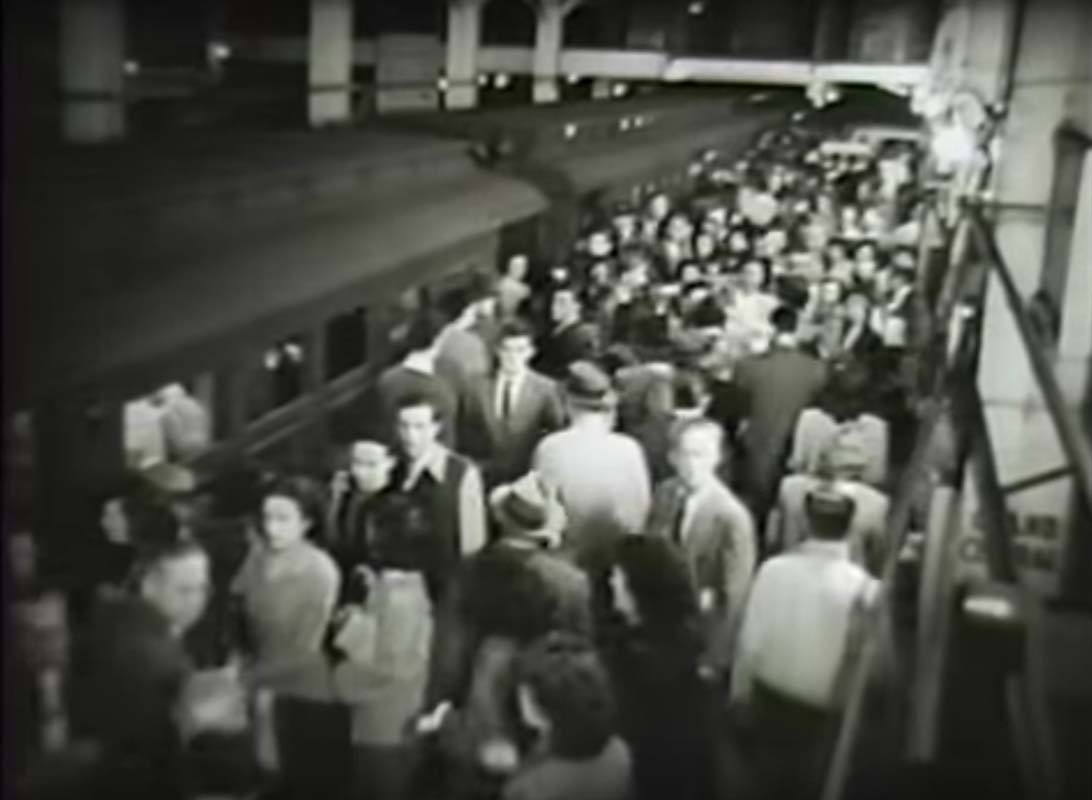The New York Transit Museum archives has a video produced by the N.Y. Board of Transportation in 1949 and directed by Henwar Rodakiewicz, a close friend of photographer Alfred Stieglitz who also directed Portrait of a Young Man and the documentary Land of Enchantment: Georgia O’Keefe. This documentary style video, Rapid Transit, shows how the city’s subway system worked – more a Cities 101 style piece to convey the complexity of operations than a romantic look at transit riders.
Still, there are some great shots of Pepsi Cola vending machines, a self-winding clock, old wooden turnstiles and a fare booth – the first token didn’t appear until 1953, but the fare in 1949 was $0.10 and the turnstiles were modified in 1948 to accommodate the dime. There is a clearly a focus on technology and the process of maintaining the subway for the video, showcasing the indicator lights, track inspectors, crossover tracks, and the experience of the transit workers. At the time, the system had 5.5 million passengers a day – not too dissimilar to now. The system had 5.6 million passengers a day in 2015.
The video begins at rush hour at Grand Central Terminal, with what seem to be actors mimicking overheard conversations on the platform as voiceover, and goes out to many locations throughout the city from the Bronx to Brooklyn.
You’ll hear that great mid-century announcer accent with some wonderful phrases like, “In the meantime, Pat Lochlan pulls the 5:25 into Burnside faster than a scared cat on a fence.” Shortly thereafter, a slight delay as a busker tries to get a musical drum into the train and gets caught in the door. At the Smith-9th Street stop, the highest station in the system, with a 1940s view of the New York City skyline with the Empire State Building in view.
A section with the system’s commissioner shows planning for the Second Avenue Subway: “Miles of new housing need miles of new track. 70 track miles of 5 million dollars a mile.”
The main message of the video at the conclusion: “Through greater passenger cooperation, millions of riders will get there faster by rapid transit.”
Next, read about the Top 10 Secrets of the NYC Subway.






